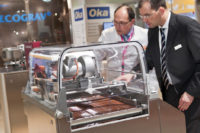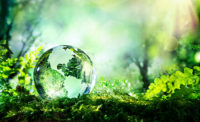
The Southampton Study
Many consumers are concerned about food safety and health issues when purchasing a confectionery product.“Specifically, the confectionery industry in Europe is experiencing a significant shift toward the use of natural colors where traditionally artificial colors have dominated,” says Carol Locey, director of product management for colors at Kalsec. “This shift is linked to the 2007 Southampton study on the effect of synthetic colorants and hyperactivity in children.”
Commissioned by the U.K. Food Standards Agency (FSA) and conducted by researchers at Southampton University in the U.K., the Southampton study suggested that a mixture of certain food colors and the preservative sodium benzoate could be linked to an adverse effect on the behavior of hyperactive children. In March 2008, the European Food Safety Authority’s (EFSA) AFC Panel reviewed the claims, concluding that there was only limited evidence that the mixtures of additives tested had a small effect on the activity and attention of some children. Also, the effects observed were not consistent for the age groups and mixtures used in the study. As a result, the Panel concluded that the study could not be used as a basis for altering the acceptable daily intake of the respective food colors or sodium benzoate.
In November 2008, however, FSA chief executive Tim Smith sent a letter to stakeholders to update them on the U.K.’s position on the six artificial food colors mentioned in the Southampton study. In his letter, the FSA and government ministers asked U.K. manufacturers to voluntarily remove the following artificial colors by the end of 2009: E102 Tartrazine, E104 Quinoline Yellow, E110 Sunset Yellow, E122 Carmoisine, E124 Ponceau 4R and E129 Allura Red.
In response to the voluntary ban, confectionery giants Cadbury and Mars promised to remove the six artificial colors from all of their brands by the end of 2008. Now, the U.K.-based Food Commission is criticizing these companies for not following through on their promises. To be specific, Cadbury’s Crème Eggs and Mini Eggs still contain the colors, while Mars’ Starburst Choozers and Mars Revels also contain some of the colors, according to the Food Commission.
Proposals for new European legislation regarding food additives contain a requirement that 18 months after the new law takes place, food including any of the six colors mentioned in the Southampton study must be labeled “consumption may have an adverse effect on activity and attention in children.” The labeling requirement is expected to take place around mid-2010, according to the FSA.
The FSA has published a list of manufacturers, retailers and caterers that do not use any of the six artificial colors linked to hyperactivity in children. Any manufacturers or retailers wishing to notify the agency that their products do not contain the six artificial colors should contact Clair Baynton atclair.baynton@foodstandards.gsi.gov.uk. The FSA’s web site will be updated on a regular basis with this information.



